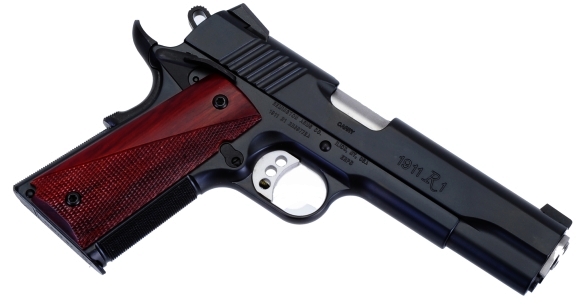
For folks who developed their shooting expertise with Euromatics, presets and double actions… particularly 9mm guns, the strong attachment many have for the 1911 type 45 ACP pistol is puzzling. Sort of the way that recent grads of the public school system, or the current university system, can’t understand why everyone isn’t a believer is liberal politics, global warming, parakeet rights, and the evils of capitalism. For the rest of us who love the 1911, we wonder why there is a need for anything other than the 1911 and how America has produced such a crop of potato heads.
Substantiation of my assertion, “1911 45 ACP, you either own one… or you want one” can be found in the fact that companies such as Ruger, S&W, SIG and Taurus are all making traditional 1911 type pistols and there are lots of new companies finding their legs by assembling and marketing 1911 type pistols. The 1911 also seems to be enough gun to bring Colt Manufacturing back to life.
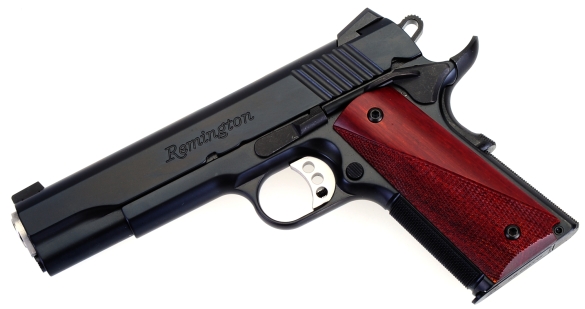
Remington’s 2010 announcement of 1911 type production took some people by surprise, probably folks not aware of Remington’s earlier production of this type of firearm. Remington UMC produced approximately 21,000 during World War I. You stop making something for 90 years or so and right away people think you can’t. In current times, utilizing Remington’s advanced manufacturing capability to produce a popular firearm makes a lot of good business sense.
There is a night and day difference between the initial R1 release (pictured below), and models like the Carry (pictured above) that have been added since. Starting from the top, the Carry model has Novak sights, Tritium front and no snag rear. The Carry has coarse diagonal slide serrations, rather than fine vertical. The original has a narrow spur hammer, the Carry has a Commander type hammer to compliment the change to a beavertail style grip safety with pressure pad.
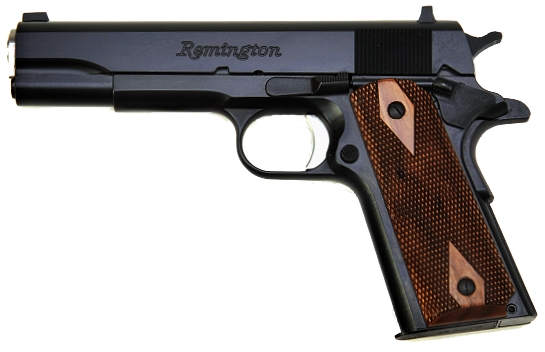
The Carry has an extended ambidextrous thumb safety and a long, lightened trigger with overtravel adjustment. Where the basic R1 has a smooth front strap and vertical serrations on the mainspring housing, the Carry has 30 lpi checkering on both surfaces. The basic R1 has double diamond walnut grips, secured with cross slot screws. The Carry grips are Cocobolo wood, secured with socket head fasteners.
Both the basic Remington R1 and R1 Carry are shipped with a hard case, manual, barrel bushing wrench and lock. However, the basic R1 is supplied with two 7 shot magazines, while the Carry includes both a 7 shot and 8 shot magazine. Both are manufactured by Remington in Ilion, NY. The basic model R1 has an MSRP of $729. The Carry version has an MSRP of $1,299. Each is available through discount retailers for approximately $100 – $125 less.

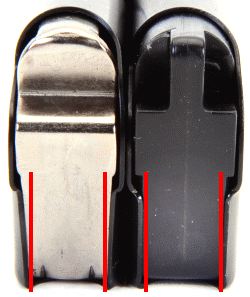
The 7 round and 8 round magazines are considerably different, although I am not sure those differences play out functionally. The 7 round, far left, has tapered lips that foster earlier cartridge release, which favors short overall length rounds and semi wad cutter ammunition. Excessive retention tends to catch the rim low on the breech face, sharpens the feed angle of the round and jams the bullet’s nose against the top of the gun’s chamber. The 8 round magazine has parallel lips, longer retention, but extended cartridge support when a round’s rim is fed under the extractor.
From what I can tell at this point, both magazines feed anything, commercial at least, but the plan is to spend a lot more time live fire checking to see what the R1’s functional reliability looks like over the longer term. Ball ammo seems never to be a problem in modern 1911s, it is the weird truncated ammo that sometimes poses a problem. Again, no sign of such a problem so far.
The 8 round magazine is also, of course, longer, which causes it to project the amount shown below the gun’s grip. Not really noticeable in use and does not get in the way when carried concealed.
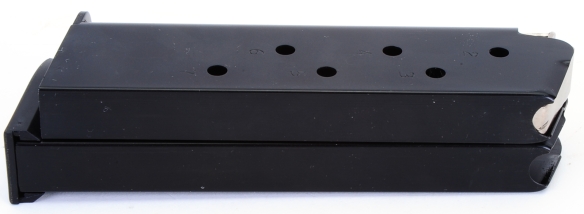
Remember the 70’s and 80’s?
The 1911 design has an inertial firing pin. It rides in a channel in the slide, held in a neutral position by a coil spring’s resistance. This resistance is overcome by the forward motion and subsequent kinetic energy of the firing pin when it is struck by the gun’s hammer. As the energy is depleted, like when the firing pin smacks a primer or runs out of forward travel, the stored energy in the spring returns the firing pin to a neutral position and prevents it from moving forward and unintentionally striking a primer on a live round. This holds true in “Series 70” type guns.
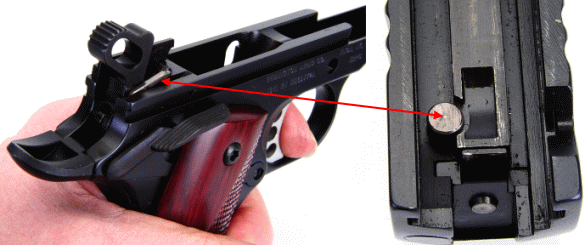
Man, in his never ending quest to never leave anything alone, decided to add a firing pin plunger lever to the 1911’s frame and a firing pin plunger in the slide and proclaim this to be the Series 80… in 1983. The plunger mechanically blocks the firing pin’s motion unless the trigger has been depressed. The idea is that the inadvertent shock of a fall or strike would not drive the firing pin forward and cause an accidental discharge. Of course, the villagers were up in arms as the addition prevented trigger jobs that resulted in a 6 ounce trigger pull, some even setting out to find ways to remove this extra linkage. In the case of the Remington Carry, pull is down at 4 lbs and light enough for anyone except perhaps a dedicated bullseye shooter who only carries his gun to the shooting bench and home.
Seems oddly familiar…
After spending 10 or 15 seconds field disassembling the Carry model, it became abundantly clear that it has the same parts as every other good 1911 type, however, perhaps more nicely finished and more carefully assembled. The slide fit is tight, as in the barrel bushing, but the parts finish is so slick everything moves as though on roller bearings. The frame and slide are chrome moly steel, the barrel and bushing are stainless. If you’d like to see further parts detail, please see the original R1 review.
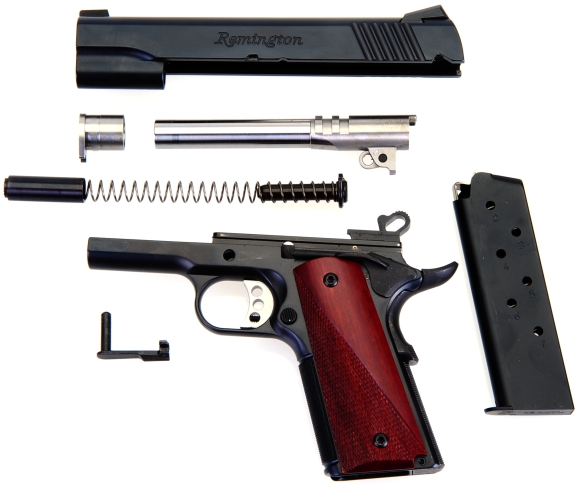
The Remington 1911 R1 is a spec 1911 so aftermarket parts and accessories interchange, at least to the extent they interchange on all spec guns. The 1911 is a gun where most parts are a drop in, some require hand fitting, particularly when it comes to trigger and safety pieces, but all of the pin locations and part geometry are standard on the R1.
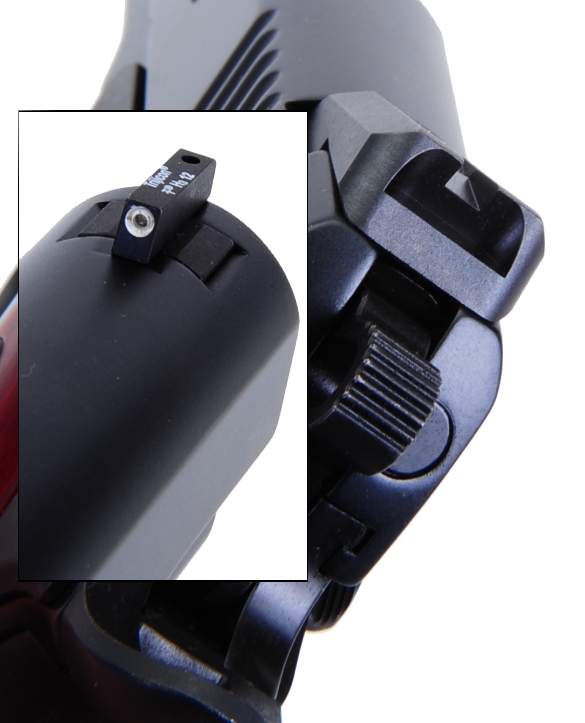
The Carry sights are crisp, forming a very clean sight picture and they are windage adjustable. Additionally, they are low profile and dehorned to prevent them from snagging on clothing. The mounting dovetails, front and rear, are standard Novak type so, if you want to change sights at any point, there are many to select from.
Why is this such a likeable firearm?
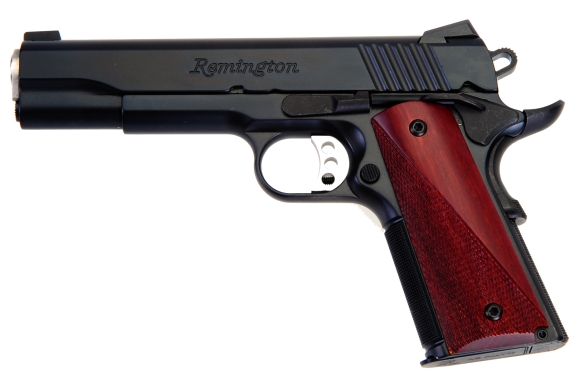
|
People tend to speak of the 1911 as though it is a physically large firearm. The bore is, however, the pistol is not. The 11º grip is slab sided, long enough to fit most large hands, but narrow enough to allow most shooters to get a good solid grab on the gun. As an example, my wife has small hands, but is an excellent shot with the 1911 and has no problem handling the recoil.
The 45 ACP can be a very powerful round, however, it can also be a relatively softball 185 grain target hole puncher. 1911 types tend to produce good accuracy right out of the box, and they seem to hold onto that mechanical accuracy for a very long time. Just because a slide rattles a bit from extensive use, doesn’t mean the gun is no longer accurate. The Remington 1911 R1, like other 1911 pistols, is easy to service and maintain and they always seem to look good. The Remington 1911 R1 comes with a free Platinum Service Plan; 2 year factory warranty, parts and labor, seven day turn around, free shipping and one free annual clean and service.
For Part 2, we have a lot of different types of defensive 45 ACP ammo, so we are going to see how well the R1 handles each in terms of accuracy and in terms of functional reliability. Be back shortly.

Email Notification